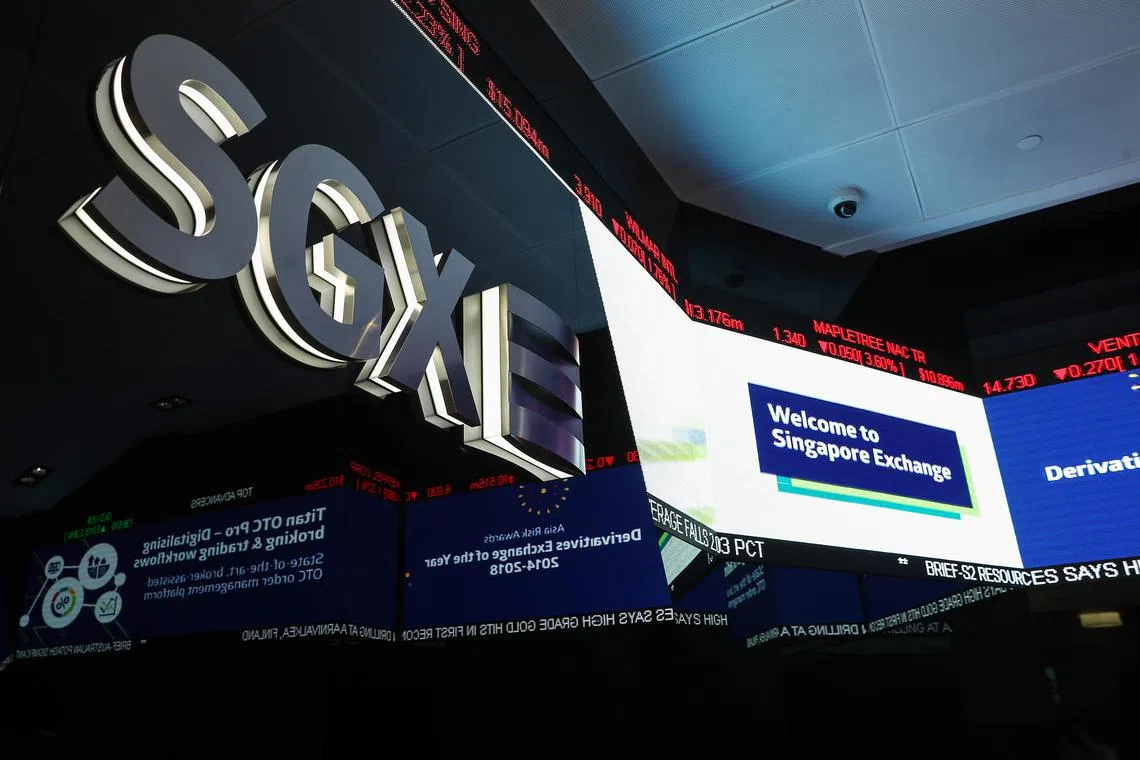New $16.8 million ETF tracking China high-growth, small-cap stocks lists on SGX
Sign up now: Get ST's newsletters delivered to your inbox

The ETF, which offers dual currency trading in US dollars and Singapore dollars, comprises 1,000 China-listed companies.
PHOTO: BT FILE
Uma Devi
Follow topic:
SINGAPORE – CGS-CIMB Securities listed a US$12.4 million (S$16.8 million) exchange-traded fund (ETF) on the Singapore Exchange (SGX) on Thursday.
The CGS Fullgoal CSI 1000 ETF mirrors the China stock market’s small-cap index – the CSI 1000 Index.
The fund, which offers dual currency trading in US dollars and Singapore dollars, comprises 1,000 China-listed companies that have a market capitalisation of less than 20 billion yuan (S$3.8 billion).
The fund’s constituents span “cyclical and innovative” industries, such as electronics, pharmaceuticals and machinery, CGS-CIMB said.
They represent 13.1 per cent of the total market value of all listed companies on the Shanghai and Shenzhen stock exchanges, and 21.1 per cent of market turnover.
CGS-CIMB said the ETF is more exposed to China’s technological innovation era, as more high-tech growth industries are included in the CSI 1000 Index.
As at end-October, the information technology sector had the highest weighting in the CGS Fullgoal CSI 1000 ETF at about 25 per cent. Other top sectors in the fund include industrials and materials, with weightings of 21.5 per cent and 15.9 per cent respectively.
CGS-CIMB’s group head of investment management Ademola Olopade told The Business Times that China’s small-cap sector showcases “high-growth stocks” – or the future Tencent or Alibaba – in sectors such as pharmaceuticals or innovative technology.
The stocks with the highest weighting in the CGS Fullgoal CSI 1000 ETF are camera phone component supplier OFilm Group and food manufacturer Anjoy Foods Group. Each stock has a 0.44 per cent weighting in the fund.
Other top stocks in the fund by weighting include investment bank and brokerage firm Pacific Securities, circuit board manufacturer Shenzhen Fastprint Circuit and digital map manufacturer Navinfo.
Year to date, the CSI 1000 index is down 4.9 per cent. It fell 21.6 per cent in 2022 as China slowly reopened its borders after the Covid-19 pandemic. In 2020 and 2021, the index was up 19.4 per cent and 20.5 per cent respectively.
Mr Olopade said interest in ETFs notably picked up after the pandemic. He noted that there has been a shift in investment behaviour globally from trading to investing.
“This means that as opposed to trying to pick a single stock, it’s easier for you to express your view on the market by using an ETF.”
On why SGX had emerged as the exchange of choice for the listing of the CGS Fullgoal CSI 1000 ETF, Mr Olopade said CGS-CIMB is licensed in Singapore and the newly listed ETF is a feeder into an existing master fund in China.
He added that the group is also capitalising on the ETF link between China and Singapore, which allows Singapore-listed ETFs to access northbound clients in China or vice versa on an “efficient and broad-scaled basis”.
While the Chinese stock market has seen its fair share of troubles over the past year, Mr Olopade stressed that investors should not write off investments in the country altogether.
He noted that despite market noise around the pandemic, geopolitical tensions and the recent property crisis, the CSI 1000 Index is not down significantly.
“An investor should be comforted by the fact that the market noises, as large as they sound, on a net basis are not as disastrous,” he said, adding that ETFs are one way for investors to buffer their portfolios against market volatility and one-off events. THE BUSINESS TIMES

